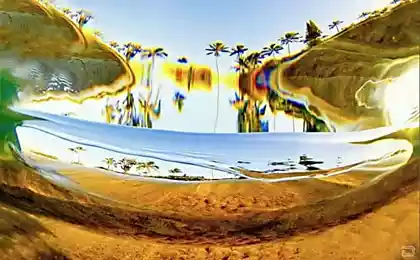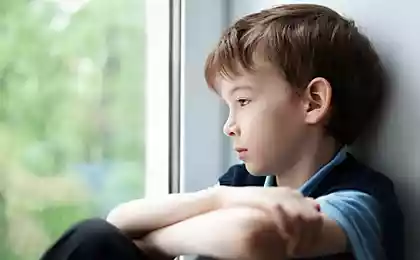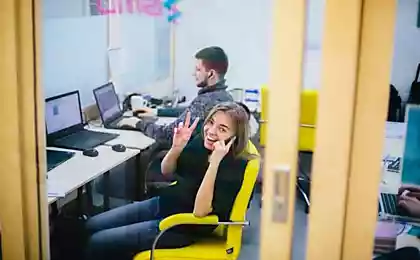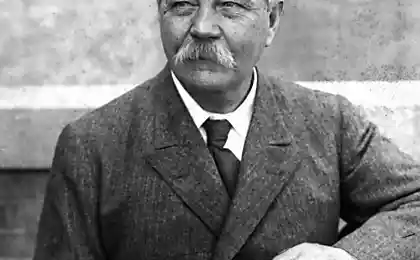975
Interview with the inventor Coworking
«Рабочий and Farmer »- is a new type of pair of antique sculpture, and create a new type of extremely difficult. In any case, this is the best the world sculpture from the early 20th century. Not to mention the cultural component. This monument to the emancipation of women, urbanization and cultural revolution of the 20th century.
However, his contemporaries, this monument was greeted as a matter of course, which has long lacked - a perception, of course, negates its sensationalism. But like all revolutionary ideas are born, changing the very structure of your space? It seems that even Newton said that you can only see beyond standing on the shoulders of giants.
Mukhina and lofan were clear on whose shoulders. Their statue literally gathered from the two known specimens of ancient art: from «Ники Samothrace »and statues« Тираноубийцы». As a result, Fly has done the impossible - after 2000 years of ancient sculpture to complement the new typecasting.
But statues are evident, they are easy to see. Ten years ago, was born a new type, the type of work organization called « coworking », and it seems to me, the history of its occurrence deserves attention, no less "Worker and Collective Farm", in any case, the network has left a man who has not heard a word.
That's why I decided to find his creator - Breda Newburgh - and to interview him. It turned out that he spent on his invention of three years, experimenting with collecting enthusiasts in coffee shops to work, but when it did not work out, helped him find inspiration notorious Arthur C. Clarke! In 1970th Brad read some interviews fiction, where he predicted that in the future, where all will work on udalёnke, must be the place (in libraries, of course), where they can sometimes be collected in order to "have its own community."
So science fiction has become reality thanks to the perseverance and dedication of startups. It's time to give him the floor.
You have started the very first coworking in 2005, and now, nine years later, in 80 countries around the world they have already 2500. In Russia alone there are about 100. Do you feel that all your doing?
B>
Coworking always been self-organizing thing. As soon as I started my, I told everyone from the start to steal my idea and develop your own taste. So now coworking in Russia - is the brainchild of those who created them. By the way, 100 coworking - is an impressive figure!
The post-industrial economy, giperinformatsionnoe society anarchist revolution - how do you see our future and that from it wait?
B>
Predicting the future is always difficult, prediction - it is only a probability that can not happen at all.
We here in the United States believe that a maximum of 30-40 years anthropoid robots and artificial intelligence will take the monotonous activities: long-distance transportation, work in factories and so on. In general, our society is rich, but it has huge layers, constantly find themselves without work. Modern financial scheme set up like this: you get your salary every month, and it covers your needs. It shares the work and survival.
20-30 years later, some of the work in the service sector will still exist: the restaurant business workers, maids and so on - they are not going anywhere. In many countries, these positions are very well protected by law, they are trying to transform from a lower class to the middle. The use of robotics in these areas too difficult and expensive, easier to give these people a decent warranty and provide them with the opportunity to live at the level of the middle class.
In global financial transaction tax would be small in the style of Robin Hood. This money will drip into the global fund needed to help traders in the case of market failure. This function fund "will select" governments, and that is what is important. Second, why is it necessary - to compensate for market injustice. This money could be invested in the development of those countries that are now left behind major powers.
Internet start the process of rapid and anarchic group formation. Fast wireless networks allow to communicate with anyone anywhere in the world without interference and in high quality. Will be available online deep and interactive tutorials that will allow people to educate themselves in all spheres and directions. This giperinformatsionnoe society where important not to find the information, but rather, blocking fanfare.
The reality around us is full of distractions, so that society will start creating technologies to exist without them. For example, something like meditation will be an important skill. Some public spaces such as restaurants, visitors will be able to send Soup to sleep - relax in the company of friends and it's time to use the phone is simply rude.
Here are a couple of my ideas. In fact, I can develop the theme indefinitely.
Coworking - a lot of startups and large corporations will soon join this movement?
B>
I believe that it is all the same for non-commercial environments and small companies. That is, the corporation can sit in coworking, but I would not want them to dominate. I'm for the separation of spaces.
What are the advantages of working coworking? I, for instance, difficult to concentrate among strangers. I find it easier to work at night and alone at home. What should happen to coworking has become as comfortable as my sofa?
B>
Coworking should be comfortable and pleasant to work with. It should help you focus and accurately perform tasks. It should take you away from all the distractions at home, to take you to interesting people. Good coffee, great food in between, it's all necessary. Coworking must be a union of quiet seclusion and convenient places for socialization and work.
How did your first coworking? It was an abstract idea or a consequence of the need?
B>
I worked live-coach and wondered, what would I do next. I decided that I wanted to start their own business. While I was thinking, what it should be, I had an idea to create a community with whom I could consult. And there was the word "coworking" and the very first place. It turns out that this was a consequence of the need - what I wanted and what did not exist.
How things went in the first year? Can you show pictures of that time coworking?
B>
First coworking space became Spiral Muse in San Francisco. The first couple of months, things were not so - it's a few people. Then people imbued. Many came and carried away by the idea, but could not join - then I asked them to steal the idea and finish it to your taste. Now, of course, it all just looks like gatherings with friends in an apartment, but the first steps are always modest.
And what was the second? What was it like to look like your idea spread throughout the world? B>
The second was Hat Factory loft in San Francisco. I did it with the help of 10 volunteers. It was very nice to look at a large group of people imbued with the idea and helps to realize it. As you can see by the photos, everything looks much more serious.
Do you have a favorite and least favorite coworking? Generally, you are interested in an industry that invented himself? B>
The place where I'm a frequent visitor - Workshop Cafe in downtown San Francisco. I really like this coworking. In San Francisco coworking all good, but abroad too, is full of excellent examples.
Not all coworking became successful, many examples of failures. During the conference, Massimo Carrara in Italy in 2011, it was mentioned that Italy - the first country in Europe to coworking, there were 58. Now they are out there somewhere 25 pieces. So, more than half were closed for 3 years. Does it mean that to make a successful coworking really hard? B>
I'm sure a lot of things you need to know to make a successful coworking. You have to create a place where different people will be comfortable working. You should have enough money to spend and, of course, you must be a profit. I think that this movement is only just figured out how to make this successful model.
There are several types of coworking:
Comfortable working space. The owners of this spend a lot of time and effort to design, create bright, spacious rooms. This is the future of coworking in the United States and Australia.
A place where people from the creative industry meet and exchange ideas. This - the most common model. One difference - while the Americans and the Europeans are trying to make the space and create a semblance of unusual art galleries, everyone else is doing the simple and clean rooms, more like offices.
Place for business meetings. In such places the main income - leased under peregovorki meeting. Such a model is particularly popular in Britain and the US.
In Russia, the most successful coworking try to apply all the models immediately. What do you think are the main feature of a good place? B>
I think that every location is different and requires its own approach. Of the three closest to me number 1, but each of them is useful in its place.
Socialization, networking, meetings - it's all great. But for ordinary freelancer major factor - price. Own workplace can cost from 150 to 1,000 euros when the normal access, without their own seat, worth 100-400 euros per month. But, in general, it is normal practice. What about you? What sort of price?
B>
In my first time visit was worth $ 20, and a month - 150-200 $.
How can I measure the quality of coworking? Are there any criteria? Speaking of DI Telegraph, which had advantages and disadvantages? What are the challenges we have to ask ourselves?
B>
Coworking is successful if it gives people the community in which they are free to work for themselves. If you created a coworking community held and gave people the opportunity to freely perform creative work - he coped with his task.
Well, hopefully, DI Telegraph turned out quite creative place - go check yourself .
Lecture on Architecture Boris Dubin "perfect body and Modern Society" in coworking DI Telegraph, from which you can learn a lot about ancient sculpture and its role in art.
Source: habrahabr.ru/company/dreamindustries/blog/237261/






















